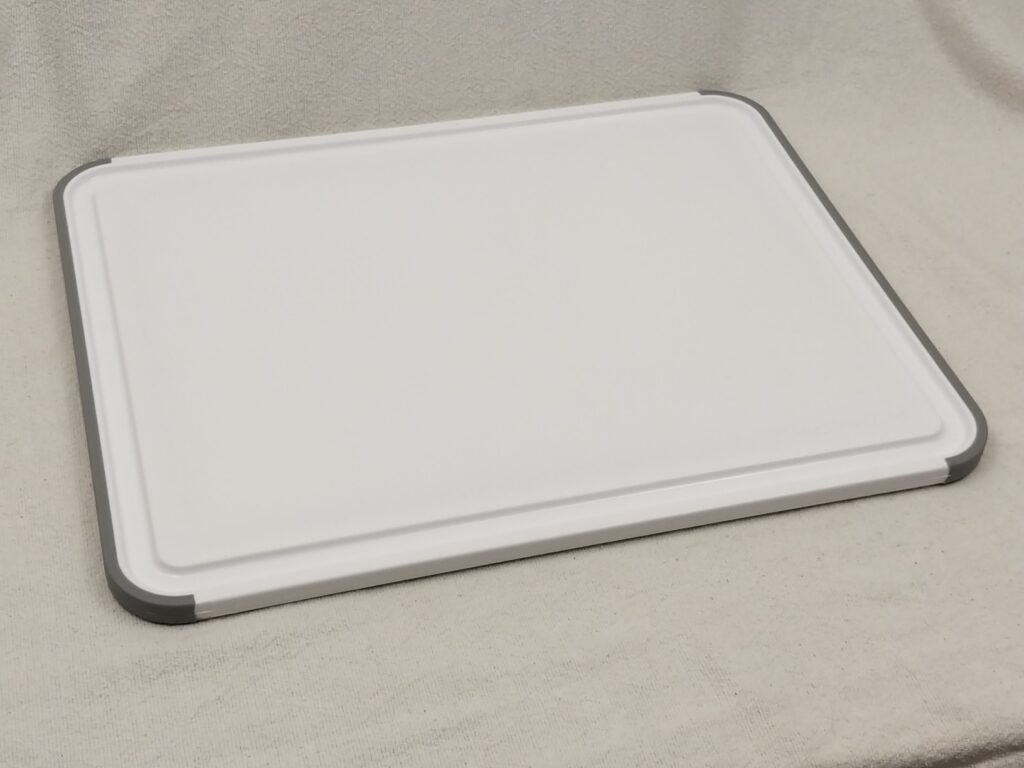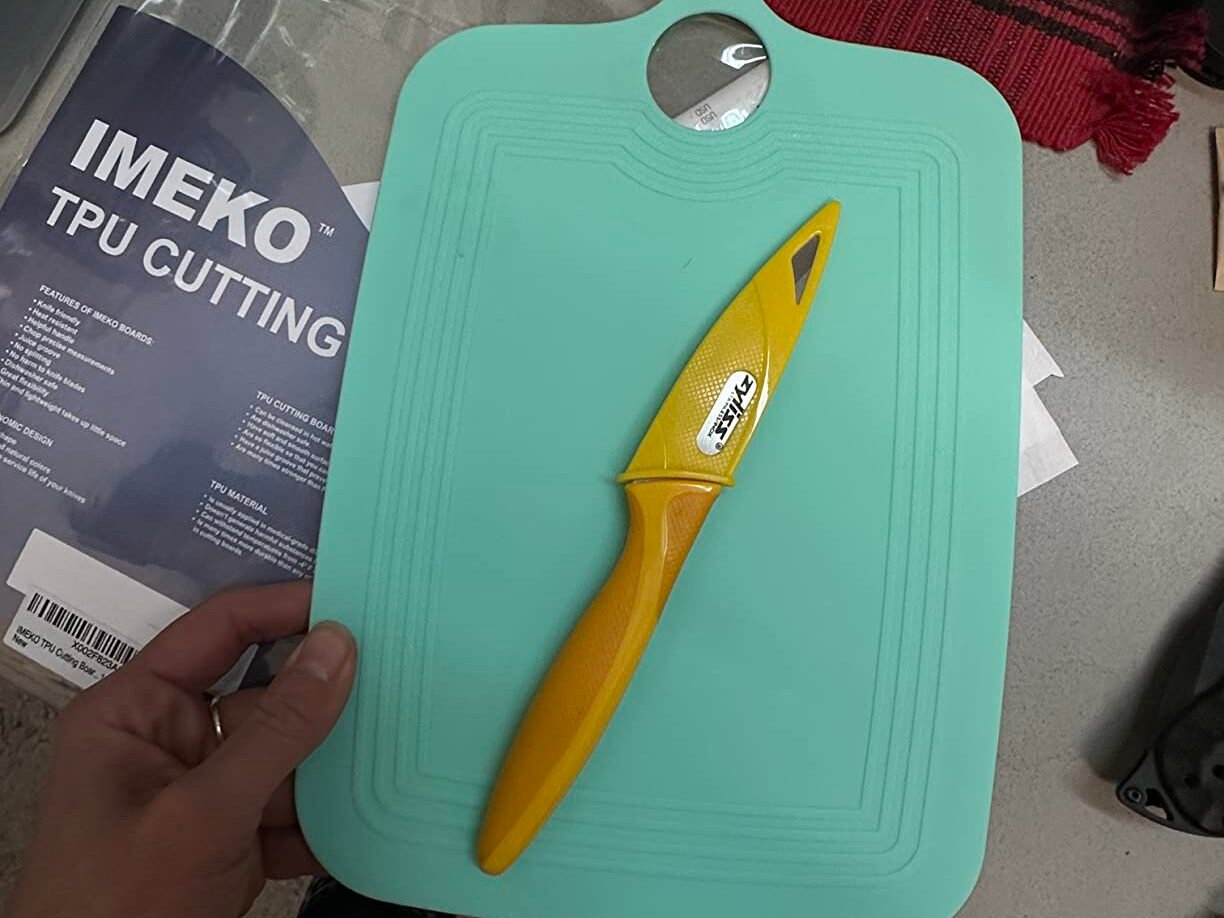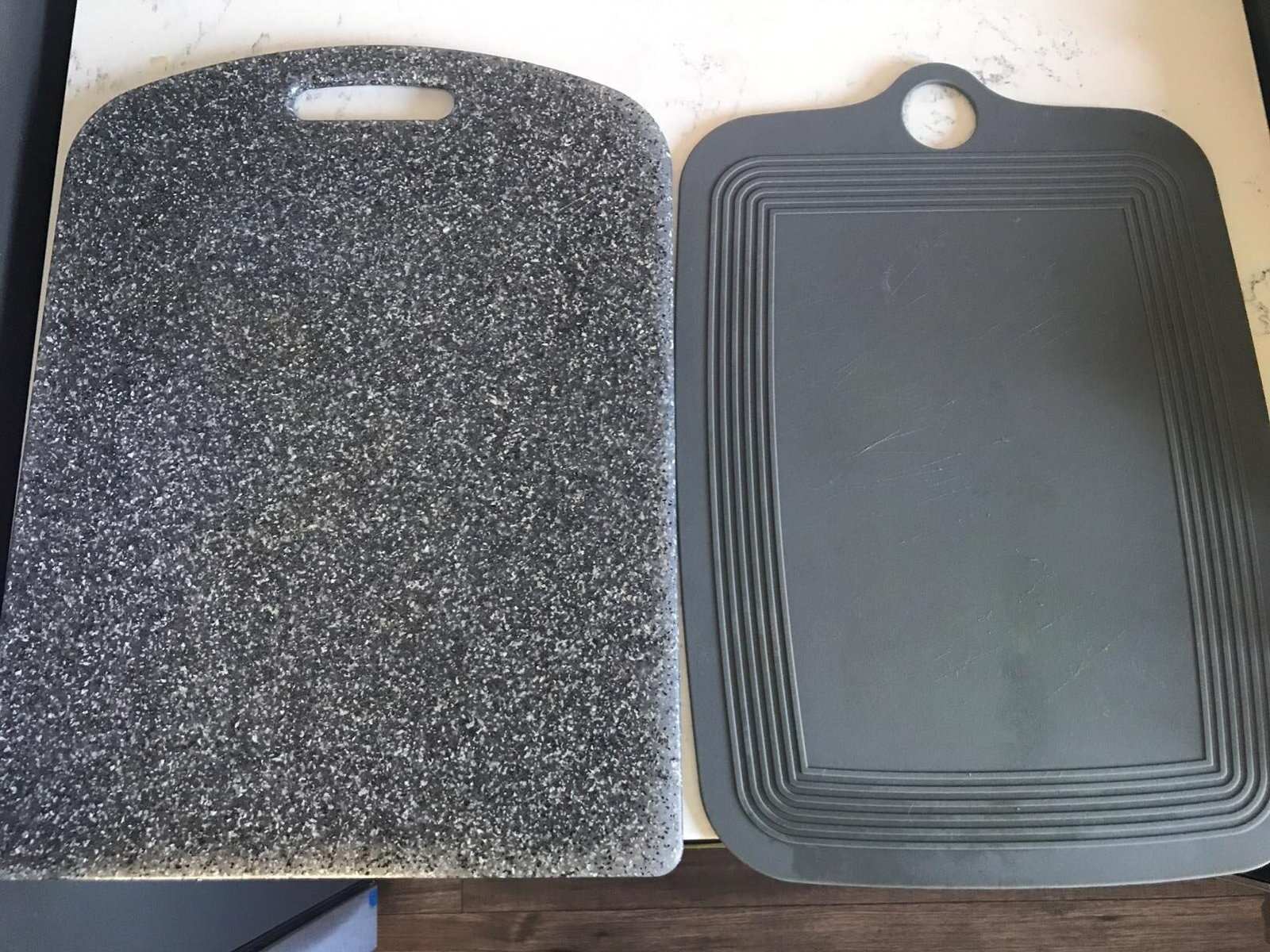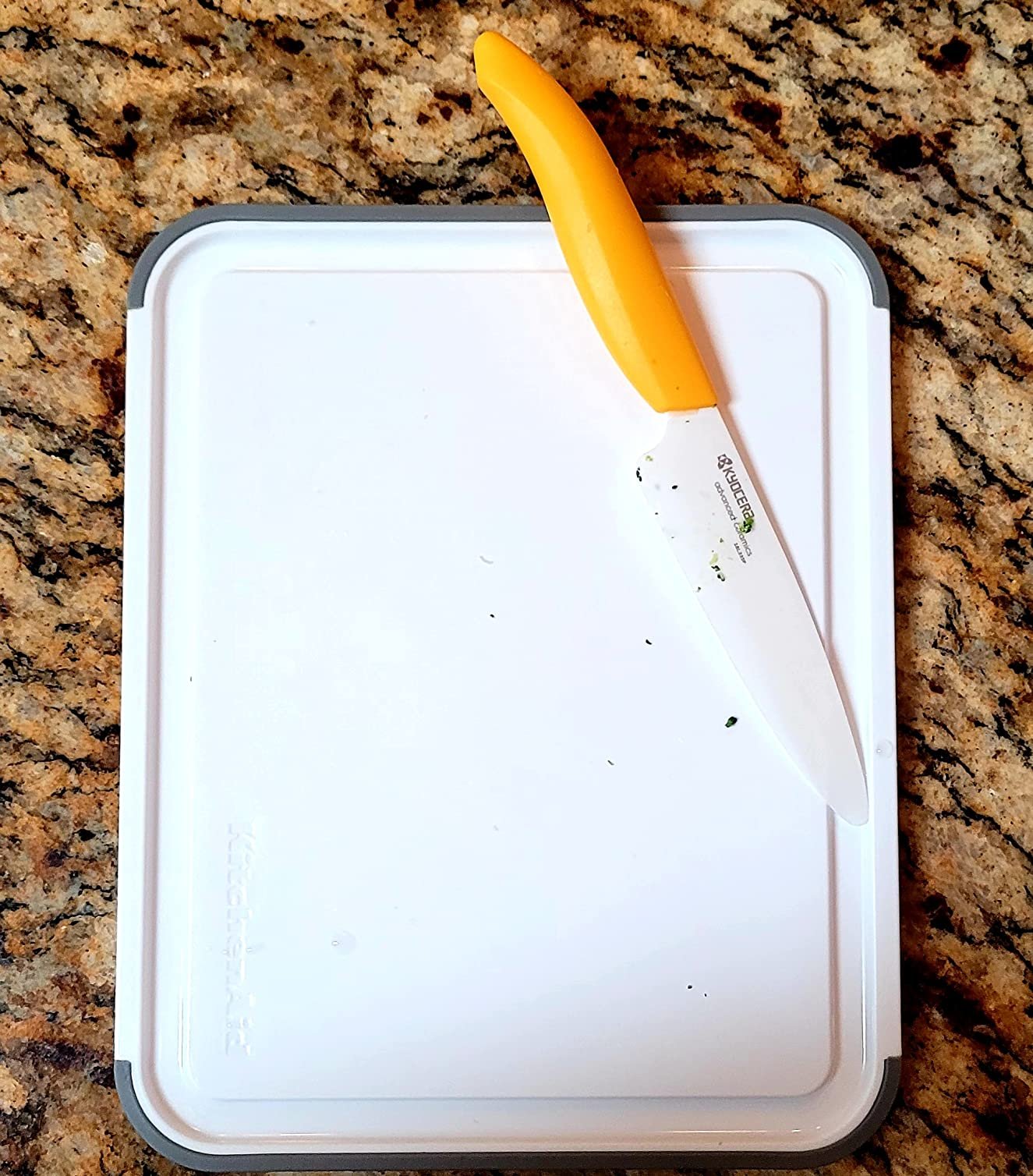What is the Best Cutting Board for Meat: A Butcher’s Guide
Chopping boards are an indispensable kitchen item. Have you been asking, ‘What is the best cutting board? Here, we will look at different types of cutting boards designed specifically for meat cutting, taking a close look at their pros, cons and benefits before helping you choose one for yourself.
Why the Cutting Board Is Necessary When Working with Meat
They’re more than just a pretty piece of wood. The right board for cutting meat is about much more than looks. Safety and knife maintenance, as well as the quality of your overall cooking experience, all play a role.
You may be wondering “What’s the best meat cutting board? Here we will look at the different types of cutting boards for meat. We’ll look at the pros, cons and benefits of various materials to help you choose the right board for your masterpieces. You can also read our other bog posts on smarttoolbuddy
Why the Cutting Board Is Important for Meat
When it comes to cutting meat, your choice of board is very important:
- Safety First: Raw meat may contain dangerous bacteria. A proper cutting surface can help avoid cross-contamination of foods by the bacteria present, helping keep food sources safe.
- Knife maintenance: Different materials affect knives in different manners. Certain boards are gentler on blades, and require less sharpening.
- The cutting experiment: A good board provides a stable and grippy surface which allows confident cutting. This is especially important for large cuts.

Comparing cutting boards for meat
Let’s get started! This is a comparison between the most popular cutting board and its performance in meat preparation.
- Wood
Pros:
- Wood is better for knives: Wood is an organic material that is much gentler on knives than glass or plastic, which means you’ll likely need to sharpen less often.
- Wooden cutting boards: are beautiful, durable and cozy additions to any kitchen, providing warmth as they provide long-term use if cared for properly. Not to mention adding warmth.
- Studies indicate that certain wood: types possess natural antibacterial qualities which can reduce bacteria.
Cons:
- Upkeep Required: Wood boards require regular lubrication in order to prevent warping and cracking, which may be extra work for some chefs.
- Porous If wood is left without proper cleaning, meat juices can cling to its surface and make it more porous, leading to bacteria growth and making the wood vulnerable to infection.
- Dishwasher-safe: For optimal results, wood boards should be hand washed and dried after each use in order to avoid warping or cracking.
Popular Wood Choices
- Maple A popular maple known for its durability, hardness and strength.
- Walnut is a beautiful and dense wood that’s good for protecting knives.
- Teak Naturally water resistant and requires less lubrication.
2. Plastic
Pros:
- Easy Clean-up: To make cleaning simpler, plastic boards can be put into the dishwasher for easy removal.
- Lightweight and Affordable: For budget-minded customers who prioritize portability and lightweight options. Available in various colors and sizes.
- Plastic non-porous: materials like plastic do not absorb juices from meat products, decreasing the chances of bacteria growth and decreasing chances of contamination.
Cons
- For blades made from bamboo or wooden materials, their blades may become dull faster.
- Certain plastic boards may not be as sturdy: Certain types of plastic boards can be lightweight and even slide off of countertops when in use.
- Plastic is not environmentally-friendly: Because it does not biodegrade, plastic cannot be considered sustainable product.
3. Glass
Pros:
- Non-porous and Hygienic: This material is nonporous, making it easy to disinfect. Therefore, it makes an excellent choice for those concerned with hygiene.
- Elegant, stain-resistant: and visually appealing fabrics have many desirable characteristics that make them appealing choices for carpet flooring.
Cons:
- Glass can be hard on knives. It will dull them very quickly.
- This product is prone to slipping and breaking. It can be dangerous to use this product due to its potential for slipping and shattering.
- Not the Best Cutting Experience: The hard surface can cause wrist jarring during long cutting sessions.

4. Bamboo
Pros:
- Its o Eco-Friendly and Renewable: Bougainvillea is an eco-friendly material which grows quickly to provide a renewable alternative to plastics.
- Wood is gentler on knives than plastic but not as gentle.
- Non-Porous: Does not absorb liquid and makes for easy cleanup.
Cons:
- Some bamboo boards may need some maintenance. While not as demanding as wood boards, it is possible that the boards will require a little oiling to keep them from cracking.
- Hardwoods are Durable: They can be more prone to warping or cracking compared to hardwoods.
Read This Post: best herb scissors
Cutting Board Comparison
| Priority | Best Selection |
| Knife Maintenance | Wood (Maple, Walnut) |
| Easy Clean | Plastic |
| Hygiene | Glass (with care) |
| Sustainability | Bamboo |
| All-Around Performance | Wood |
What is the best cutting board for meat?
The Verdict It depends!
There is no one best product for cutting meat. Your cooking style and priorities will determine which board you should choose. Take into consideration these factors:
- Budget The cheapest board is plastic, while high-quality wooden boards can be an investment.
- Maintenance: Do You Have the Time and Energy to Lubricate a Wooden Board on A Regular Basis?
- Counterspace – Can you fit multiple cutting boards at your counter? Separate boards can help prevent cross contamination.
- Aesthetics Would the warmth and elegance of wood or glass be more appealing to you?
Bonus Tip: Embrace the Board Brigade!
Use a separate board for raw and cooked foods. This will help to prevent cross contamination and make cleaning easier.
Maintaining your cutting board
No matter the material, proper care will ensure its longevity and hygiene.
- Wood: Wash it in hot soapy water. Thoroughly dry the wood and oil it with mineral oil regularly.
- Plastics: Clean with soapy hot water or in the top rack of a dishwasher.
- Cleaning glass: Use hot soapy water or a dishwasher.
- Bamboo – Wash with hot soapy and thoroughly dry. Mineral oil may be useful to use on occasion.
The Final Cut: A Success in Slicing
Understand the strengths and weakness of different materials and compare them to make an informed choice that suits your needs. A good meat cutting board will be one you use frequently and care for properly. Sharpen your knife, grab your favorite board and create culinary masterpieces.

FAQ – How to choose the best meat-slicing partner
Find answers to the most frequently asked questions regarding the best cutting board for raw meat.
What is the best cutting board for raw meat?
While there is no such thing as “best” material, certain materials excel in certain areas.
- Knife Care: If you want to preserve your knife, a hardwood cutting board will be the best option.
- Clean up with ease: Plastic boards are the easiest to clean.
- Hygiene Glass has a surface that is non-porous, making it easy to maintain. The glass is slippery.
- All-around Performance: Well-maintained wooden boards offer a balance of knife protection, hygiene, and durability.
What is the best material for a meat cutting board?
Your priorities determine what you will do. This is a quick breakdown.
- Wood A durable and beautiful wood with antibacterial qualities.
- Material: Cheap and easy to clean, but may be rough on knives.
- The glass It is stain-resistant and hygienic but the blades can be dulled and it can break.
- The bamboo: It is eco-friendly, and it can be used to make knives. However, it will need some maintenance.
Which cutting board is the best for your health?
Why is it important to maintain and clean your board?
- It is safe to use hot soapy water for cleaning, no matter what the material.
- Certain wood species are naturally antibacterial, according to studies.
- Maintaining your board is essential: No matter the material, a board that is not cleaned and sanitized correctly can harbor bacteria.
Which is better to cut meat: plastic or wood?
There is no definitive answer. Here’s an example:
- Wood:
- Con: While some species are naturally antibacterial in nature, others can be harsher.
- Cons – Needs regular maintenance, and can be more susceptible to bacteria when not cleaned properly.
- Plastic:
- Con: Not porous but easy to clean.
- Cons: Can dull knives more quickly.
Your choice will ultimately depend on your cleaning habits and priorities. A separate cutting board is recommended to prevent cross-contamination
Related Article :
https://smarttoolbuddy.com/how-to-clean-a-wooden-cutting-board
Latest Article :
https://smarttoolbuddy.com/how-to-carry-a-knife-safely


Related Blogs
The Top 10 Best Litter Box for Multiple Cats
5 Best Dry Cat Food for Indoor Cats 2024
Affordable Bluetooth Projector for Gaming: The Best in 2024
The Best Soundbar for Music and Movies for Home Threaters
Stay Powered Up: The Best Portable Charger for iPhone 15 in 2024
The iPhone 15 Pro Max New Features: Comprehensive Features
Liquid Screen Protector vs Tempered Glass: Which is better in 2024
What is a Monkey Wrench: Complete Details
Guide to Cleaning Your Gatorade Bottle The Proper Way
How To Sharpen Garden Hoe: Real Guide to the problem
How to Use a Tack Hammer Nail it Every Time
Easy Ways on How to Clean Garden Tools at Home
Changing a Garden Cart Tire: Expert Hacks That Will Save You from $200+ in Repairs
How to Whisk Eggs: Easy Manual Techniques
Garden Fork Vs Pitchfork: Deciding Which Tool Will Meet Your Garden Needs
Conquering the Greens: How to Rake Artificial Grass
How Deep To Plant Daffodil Bulbs? A Simple Guide
How to Pick the Best Shovel for Digging in 2024
The best time to power rake your lawn
Why Your Kitchen Isn’t Complete Without an Acacia Cutting Board
How to Replace Trimmer Line in Bump Feed: Step-by-Step Guide
Perfect Make Matcha Without Whisk: The Ultimate Guide
10 Ways to Remove Snow from Driveway Without a Shovel: Innovative Snow Removal
The Ultimate Guide: How Many Wheelbarrows of Sand Per Bag of Cement
Don’t Make This Silly Mistake with Your 5 Uses of Garden Fork
Is a Spade and a Shovel the Same? Discover the Differences Here
Transform Your Garden with Stunning Garden Stake Ideas You’ll Love
The Best Home Gym Equipment you can get in 2024
The Best Home Gym Setups for Small Spaces
Shoot Like a Pro: The Best iPhone Filmmaking Kit
Are Bone Conduction Headphones Safe?